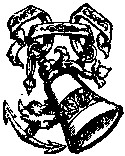RICHARD WAGNER
COMPOSER OF OPERAS
BY
JOHN F. RUNCIMAN

LONDON
G. BELL AND SONS, LTD.
1913
TO
HAROLD HODGE
INTRODUCTION
It is now one hundred years since Richard Wagner was born, thirtysince he died. In every land he has his monument in one shape oranother; his music-dramas can be heard all the world over; all theancient controversies as to their merits or demerits have died down.The Bayreuth theatre, the outward and visible sign of his innergreatness, has risen to the point of its most splendid glory andlapsed into the limbo of tenth-rate things. Every one who really caresfor the art of music, and especially the art of opera (of which artmusic is by far the most important factor), has had ample time andopportunity for making up his mind. It is, therefore, high time tosimplify and to cease from elaborating. In this book will be found, Itrust, no special pleading, no defence or extenuation, no preposterouseulogy on the one hand, and on the other no vampire work, but a plainand concise attempt to depict the mighty artist as he lived and todescribe his artistic achievement as it is. We have all had time toconsider and to sort out (so to say) the reams that have been writtenand printed about Wagner: the bulk of it has had to be thrown on thescrap-heap: what there was of value has, I hope, been utilised.
An author who plans a book on an artist or an artistic question mustbe wary, especially at the beginning of his adventure. To start awaywith a theory, whether new or old, and to yield to the seductivetemptation to convince humanity of its truth—this is to lay a trapand to take the path that leads straight into it. Theories should bekept for scientific matters. A work proving that parallel straightlines never meet need not land the writer in self-contradictions; andanother writer may prove that they must and do meet, and still avoidgetting tangled amongst his own arguments. I even read a book once inwhich it was clearly shown that the earth was flat; and, granted aludicrous premise, one could but admire the irrefragable logic withwhich the conclusion was reached. With regard to art, be your premisessound or grotesque, the result is the same—muddle. Logic, science,philosophy, applied to art, spell certain disaster. With mingled painand amusement I have noted how more than one writer on music, settingout in triumphant high spirits to demonstrate this or that, has beforehis third chapter demonstrated just the contrary: I have never seenanything else occur.
Wagner wrote so much about himself and his art, and appeared so fullysatisfied with his explanations of why he became just what he becameand of why his art was just what it was, that naturally for nearly ageneration his critics fell into one or other of two errors. Eitherthey accepted his theorisings unreservedly or as unreservedly theyrejected them. In the second case they had to face the difficulty ofcoining, shaping, a theory of their own; in either case shipwrecknearly always prompt
